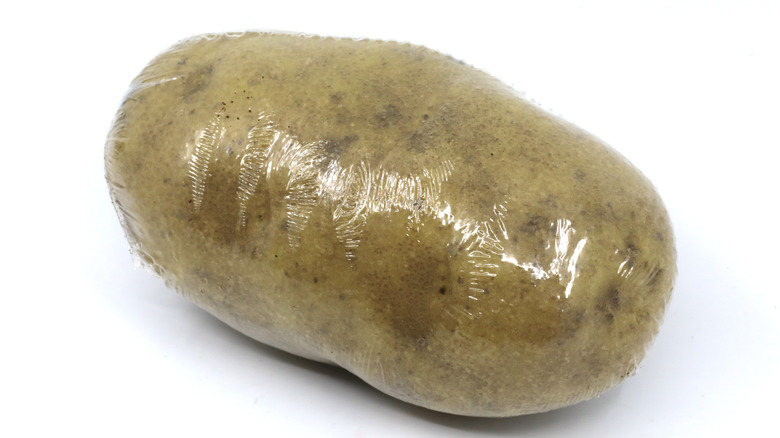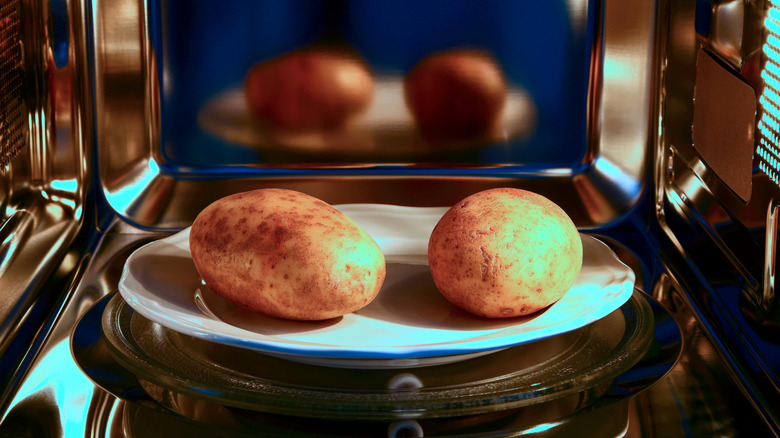What Are Those Plastic-Wrapped Potatoes In The Grocery Store And How Do You Cook Them?
If you've walked through the produce aisle in the root vegetable section, next to the large five-pound sacks of potatoes, you may have noticed individually wrapped potatoes. It seems like it's part of a new trend, having individually portioned items for single-person households, who are afraid of buying huge amounts of goods, only for them to expire before they're used. With the rising cost of groceries, one of the worst feelings is having a pack of fresh strawberries or greens go bad. The solution? Smaller sizes. Individually wrapped potatoes are both a form of convenience for parties of one — but they're also a quick meal solution, as those potatoes can typically be put straight into the microwave.
That's actually one of the benefits of being individually wrapped — you can pop it in the microwave and make a "baked" potato. Sure, you can brine a potato to get restaurant-quality baked potatoes at home, but microwaving is so much faster. Baked potatoes are a versatile dish that can be served as a side, or you can make a meal out of them with the right toppings.
The pros and cons of microwaving a baked potato
Plastic-wrapped potatoes allow you to just pop them in the microwave and conveniently get to cooking. The plastic allows for the steam to be trapped in, making for moist, soft skin on the potato — so if you're a fan of Alton Brown's hack for the crunchiest potato skin, you should skip the microwave. However, nuking your spud can be done faster than the standard 1-hour-long cook time the oven requires. Even an air fryer still takes up to 35 to 45 minutes.
Sure, it's a fast way to get your tater done, but microwaves also tend to cook things unevenly. In the case of zapped potatoes, you can use wet paper towels to allow for steam to retain moisture. The issue with that is the towel (and thus, the potato) can still dry out, which leads to a gluey texture. It seems like the only way to get your potato prepped quickly without it annihilating its texture is to use half power and stop the microwave every few minutes to rotate the potato, which can get tedious.
Critics of this method of food storage say the plastic wrap is wasteful and contributes to the high consumption of single-use plastic. And because plastic takes longer to disintegrate than more organic materials, individually wrapped potatoes may not be the best thing for our environment.
If you want to be conscious about your plastic use, or if your local grocery store does not sell potatoes like this, you can get similar results by rinsing a potato in water, puncturing multiple holes with a fork and then placing it in a microwave-safe dish and microwaving for 5 minutes and then flipping it over for an additional 3 minutes.


